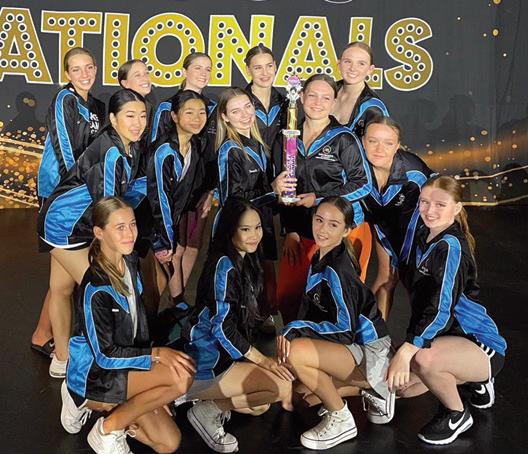
3 minute read
HIGH FIVE FOR GREAT BEHAVIOUR
Over the past few years, the new Positive Behaviour Program in the Junior School at Pacific Hills has generated a great deal of enthusiasm. It has also had a real impact on student behaviour, learning and school culture. From a review conducted by the teachers in 2018, it was decided a new framework was needed to improve the culture of respect and enhance behavioural standards. This decision was followed up with a collaborative process that engaged staff, parents and students in designing a new program that was tailor-made, just for this community. The process itself was a community building activity and we enjoyed the benefits of meeting with parents and students to fine tune the way we wanted to help our children grow and develop in their behaviours. Out of this collaborative process, the now famous “High Fives” were created.
Research
Research has indicated that children learn best when clear goals are established, a visible learning pathway is provided, and when learning occurs it is recognised and celebrated. We have applied these learning principles to the positive behaviour program.
“When teaching and learning are visible, there is a greater likelihood of students reaching higher levels of achievement.” (Hattie, 2012, p.21)
The High Fives
In Junior School, we have five core expectations for behaviour. The sign at the entrance to Junior School, along with the various coloured flags located in the playground visibly remind all members of the community that we work together, to achieve goals.
• Be Respectful • Be a Helper • Be a Learner • Be Responsible • Be Safe
For students to have a sound understanding of these expectations, and the practical outworking of each one, there is an associated character who personifies each of these different behaviours. Linked with explicit teaching, the characters enable students to better understand each of these expectations in a school context. The focus is on a different character each week, and an associated memory verse brings the learning back to its Biblical foundation. In addition, our Junior School Awards focus on each of these expectations. This helps students to be more thoughtful about improving their behaviour in specific areas and allows all students to set personal goals and experience success. A fun component of the Junior School Positive Behaviour Program is the rewards system known as the Thumbs Up Awards. We recognise that a positive classroom culture where students receive daily recognition for effort, behaviour and learning is the best approach to promote appropriate behaviour. The free and frequent use of Thumbs Up tokens provides a framework for these conversations to occur. Students are given a token as recognition for their efforts. More importantly however, the teachers are intentional and careful in the language used when giving the award. In Junior School each week, more than one thousand tokens are given out. These tokens represent the positive conversations between teachers and students that are occurring every day. This is the foundation of an excellent behaviour program and builds a beautiful school culture.
Students place their Thumbs Up Awards into a specially made letter box. Each week during our assembly several tokens are drawn out, with the winners receiving a small prize. This time of the week is a high point for the students as they celebrate their achievements in community.
Our Hope
As a Christian community we learn and grow together through our daily interactions. Our hope is that the Positive Behaviour Program will provide the children with an opportunity to develop wonderful skills and behaviours that will be foundational for a life of learning.
SCOTT COUSINS & CATRIONA CAMPBELL
Pacific Hills - Junior School
REFERENCES:
Hattie, J. (2012) Visible Learning for Teachers. Maximizing Impact on Learning. Routledge.







